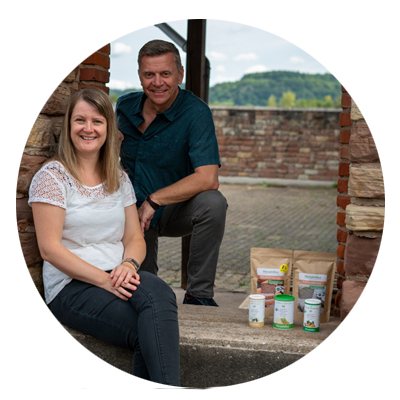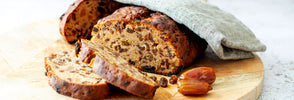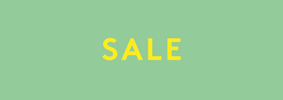
Which histamine type are you? Part 2
Histamine intolerance is always very individual and is based on different causes. Depending on the individual cause, certain histamine types can be derived. We want you8 different histamine typesintroduce. Maybe you recognize yourself in one or the other type. Of course there are also mixed types and one type can also go into the other if the actual cause remains untreated.
We already have the first 4 types in our first blog post presented. Today we continue with type 5-8. Which type are you?
The histplate type (1)
This type is only briefly torn down here, since we have already dedicated a separate blog post to this type. You can find the detailed article in our blog: How histamine affects the brain.
Histamine is a neurotransmitter in our central nervous system and interacts with other neurotransmitters in our brain. It influences our sleep-wake rhythm, our feeling of satiety, our self-motivation, fears, panic, depression, memory and our stress reactions. The histplate type thus suffers from symptoms in which the high histamine level affects the central nervous system (ZNS).
Symptoms:
- Fears and panic
- Unrest, driven
- Depression, constraints
- Sleep disorders
- Concentration disorders
- Eating disorders
- ADHD
- Migraine, tinnitus, travel sickness
Laboratory values:
- Diagnostics of the neurotransmitter adrenaline, dopamine, noradrenaline, serotonin, Gaba, glutamate (in urine)
- Copper, same or methionine, manganese, B6, zinc, vitamin B12, calcium
- Extended histamine diagnostics: serotonin, Gaba, creatinine enzyme (urine)
- Creation of a intestinal profile
- IgG food test
- Exclusion of other bowel diseases and food intolerances
Therapy approaches:
- Treat methylation disorder (if there is a corresponding finding)
- Low -histamine diet
- Psychotherapy (for fears, panic attacks, constraints, etc.)
- Stress management
- Dietary supplement quercetin, CBD oil, vitamin C, e.g. Basics)
- Fill in any lack of nutrients
The hormone type (2)
The hormone type affect women from around the age of 38, namely the beginning of menopause. The symptoms of the hormone type can then increase significantly from the age of 40. The reason for this is an estrogen dominance with simultaneous relative lack of progesterone. The hormone type thus suffers from an imbalance in the hormones (especially an estrog dominance). Functional disorders can therefore occur in the thyroid gland, in the genital organs and in the adrenal glands.
Symptoms:
- Irregular cycle, PMS
- infertility
- Repeated miscarriage
- Heart racing, sleep disorders, depression, fears
- Adrenal creation
- Underactive thyroid
- Hashimoto
- Basedow's disease
Laboratory values:
- Thyroid values
- Ferritin in serum, vitamin A, selenium, iodine, tyrosine
- Hormone levels (progesterone, estradiol, testosterone)
- Adrenal values: DHEAS in serum, cortisol in the serum
Therapy approaches:
- Depending on the laboratory finding: treat the thyroid, treat adrenal weakness, balance hormones
- Low -histamine diet
- Stress management, yoga
- Fill in any lack of nutrients
The stress type
Chronic stress is one of the largest histamine trigger and ensures that histamine is released from the mast cells. Stress is a very strong histamine liberator.
So continued stress ensures constant histamine release and damages the organ systems, especially the immune system, which is then no longer able to heal the body itself. If the stress barrel runs over, the weakest link breaks in the body (such as intestinal, heart, skin, psyche) and gets sick. In this way, food intolerances such as histamine intolerance, allergies and all other diseases can arise. The stress type thus suffers from a permanently increased histamine release from the mast cells, which is triggered by chronic stress.
But stress does not only have a negative impact on the mast cells. Stress can also be used:
- Overacid the body (see detoxification disease type)
- Strain the liver (see detoxification disease type)
- Make asthma worse (see lung type)
- Contribute to the development of dysbiosis (see bacteria type and enzyme type)
- Increase the need for vital substances (almost all other types)
- Heat chronic inflammatory processes (histamine is already an inflammatory trigger)
- Contribute to a progesterone deficiency (see hormone type)
Untreated the stress type can therefore result in any other histamine types or also acquire it. The stress type should therefore be treated in any case.
Symptoms:
- Sleep disorders, nightly teeth grinding
- Adrenal creation
- Headache, migraine
- Gastrointestinal complaints
- Susceptibility to infections
- Neck and back pain, dizziness, tinnitus
- Heart racing, shortness of breath, panic attacks, fears
- Mood fluctuations, depression
- Concentration disorders, forgetfulness
- Drug abuse
- Micronutrient deficiency
Laboratory values:
- Adrenal values: DHEAS in serum, cortisol in the serum
- Measurement of heart rate variability (HRV) or skin resistance measurement - determine stress levels
- Vitamin and mineral status
- Detailed medical history in a specialized therapist for stress or burnout
Therapy approaches:
- Depending on the laboratory finding, therapy plan with therapists
- Stress resilience training, coaching
- Histamines, low -inflammatory, base -excess nutrition
- Stress management, yoga, breathing techniques
- Learn no sags, mindfulness exercises
- Fill in any lack of nutrients because stress can cause a lack of vital substances (e.g. Histaprevent®; and Basics)
- Antioxidants
- Light regular movement, introducing relaxation routines
- Relaxing nutrients: melatonin, passion flower, lavender, Ashwagandha
The lung type (3)
The lungs are closely linked to the intestine, since the intestine and its diversity of bacteria influence all body processes. The intestine has a direct connection to the immune system and the associated immune defense. The intestine and lungs mainly communicate with each other through the immune system. The intestine is crucial because it is confronted with all the allergens and germs that penetrate into the body via the lungs and reacts specifically. Disruptions in the intestinal flora therefore have a decisive influence on the lung immune response. And conversely, the lungs transmit immune reactions to the intestine. The lung type therefore suffers from symptoms that are expressed by the lungs/skin but are actually triggered by the intestine.
Symptoms:
- Asthma, shortness of breath, heart
- Heart racing, heart stumbling, dizziness
- Irritant
- Run -away
- Chronic cough, expectoration
- Skin problems such as eczema, neurodermatitis
- Intestinal complaints such as flatulence, cramps, constipation, diarrhea, etc.
Laboratory values:
- Clarify food allergies and other intolerances
- Create intestinal profile (leaky good, number of bacteria, inflammation, fungi and parasites)
- Small intestinal misalignment, stimulus syndrome clarify
- Have a lack of nutrients clarified (vitamin and mineral status)
Therapy approaches:
- Fill -rich diet (insert slowly if you are not used to it)
- Histamine arms, anti -inflammatory, allergen -free (milk, gluten) nutrition
- Avoid pleasure toxins such as sugar, alcohol, fast food, avoid additives
- Probiotics (e.g. the bacteria sensitive)
- Intestinal renovation
- Light regular movement
- Stress management
- Dietary supplements (copper, zinc, B6, vitamin C, D, L-glutamine, quercetin, B12, curcuma-e.g. HISTAPREVENT®, Basics or L-glutamine complex)
👉🏼 Have you not been able to recognize yourself in any of the guys? Then look in our First part of the histamine types after.
Collapsible content
Sources
- (1), (2), (3) The histamine error by Kyra Kaufmann and Sascha Kaufmann
We have to point out that all information on treatment methods, laboratory diagnostics, nutrients and vitamins and their effects relate to traditional knowledge, studies and opinions and experiences of therapists and literature. Our contribution cannot replace medical healing treatment with the diagnosis and therapy of a doctor. We cannot give a healing promise either. It is primarily about passing on information. In the event of serious illnesses, non -explanatory symptoms and uncertainty, you should see a doctor. The nutrients or forms of therapy mentioned are used own dangers. Everyone has to decide for themselves what and whether they have it!

From those affected for those affected
We are Thomas and Michaela Zinser, founder of Histaminikus.
Because of the own histamine intolerance of Michaela and our son, we founded Histaminikus. The frustration does not find any suitable histamine food has spurred us to develop low -histamine food.
We would like to give you back a piece of quality of life. Feel free to look around with us.
Kind regards
Thomas and Michaela






